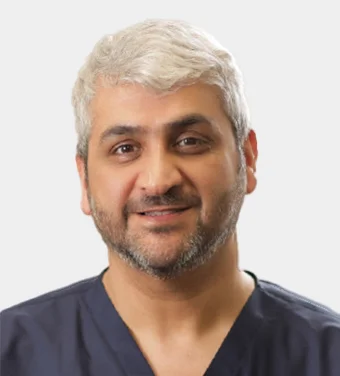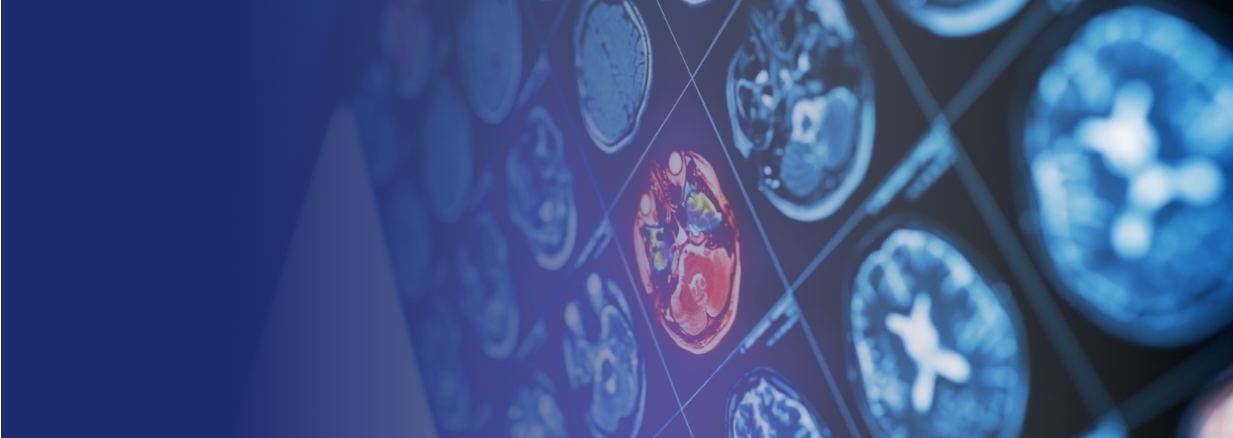
Discover renewed hope in managing chronic pain through Spinal Cord Stimulation at IBS Hospital. This innovative technique offers relief when medications fall short, aiming to improve your daily life. Explore how we harness advanced technology to ease your discomfort and help you embrace a more fulfilling, pain-free journey.
What is Spinal Cord Stimulation and how does it work ?
Spinal cord stimulators consist of thin wires (the electrodes) and a small, pacemaker-like battery pack (the generator). The electrodes are placed between the spinal cord and the vertebrae (in the epidural space), while the generator is implanted under the skin, typically near the buttocks or abdomen. Spinal cord stimulators enable patients to send electrical impulses using a remote control whenever they experience pain. Both the remote control and its antenna are external to the body.
What is Spinal Cord Stimulation used for ?
Spinal Cord Stimulation is often used when nonsurgical pain treatment options have failed to provide sufficient relief.
Spinal Cord Stimulators may be used to treat or manage various types of chronic pain, including:
- Back pain, especially back pain that continues even after surgery (failed back surgery syndrome).
- Post-surgical pain.
- Arachnoiditis (painful inflammation of the arachnoid, a thin membrane that covers the brain and spinal cord).
- Heart pain (angina) untreatable by other means.
- Injuries to the spinal cord.
- Nerve-related pain (such as severe diabetic neuropathy and cancer-related neuropathy from radiation, surgery, or chemotherapy).
- Peripheral vascular disease.
- Complex regional pain syndrome.
- Pain after an amputation.
- Visceral abdominal pain and perineal pain.
Spinal Cord Stimulation can improve overall quality of life and sleep, and reduce the need for pain medications.
Who should get a Spinal Cord Stimulator?
As with all treatments, your doctor will want to ensure that spinal cord stimulation is appropriate for you and that it is likely to provide significant relief from your chronic pain.
Each patient is different, but generally, people who benefit the most from spinal cord stimulation are:
Individuals who have not experienced sufficient pain relief with medications, less-invasive therapies, or prior surgeries.
Those who do not have psychiatric disorders that could decrease the effectiveness of the procedure.
What are the three main types of Spinal Cord Stimulators ?
Spinal Cord Stimulators come in three main types:
Conventional Implantable Pulse Generator (IPG): This battery-operated spinal cord stimulator has a battery placed in the spine during an operation. When the battery runs out, it must be replaced through another surgery. This device can be a good choice for people with pain in just one body part because it has a lower electrical output.
Rechargeable IPG: This works similarly to the conventional device, but the battery can be recharged without further surgery. Because the energy source is rechargeable, these stimulators can emit more electricity. This may be a better choice for people with pain in the lower back or in one or both legs, as the electrical signal can reach further.
Radiofrequency Stimulator: This stimulator uses a battery thats outside the body. It is rarely used today due to newer designs and better technology. It has rechargeable batteries, and like the rechargeable IPGs, it may be better for people with pain in the lower back and legs because of the device power.
Spinal Cord Stimulator Surgery
Spinal Cord Stimulators require two procedures for testing and implantation: the Spinal Cord Stimulator Trial and the Spinal Cord Stimulator Implantation Spinal Cord Stimulator Trial
- The first step is a trial period. Your surgeon will implant a temporary device for you to test. Using fluoroscopy, a specific type of X-ray, your surgeon will carefully insert the electrodes into the epidural space of the spine. The placement of these electrodes along the spine depends on the location of your pain. During the procedure, your surgeon may ask for your feedback to optimally position the electrodes.
- This trial procedure typically requires only one incision in your lower back to place the electrodes. The generator/battery will remain outside the body, typically on a belt around your waist.
- Over approximately a week, you will evaluate the device’s effectiveness in pain reduction.
- The trial is considered successful if you experience a reduction in pain level of 50% or more.
- If unsuccessful, the wires can be easily removed in the clinic without damaging the spinal cord or nerves. If successful, surgery to permanently implant the device is scheduled.
Spinal Cord Stimulator Implantation
- During the permanent implantation procedure, the generator is placed under the skin, and the trial electrodes are replaced with sterile ones. These electrodes will be anchored by sutures to minimize movement.
- The implantation usually takes about 1-2 hours and is typically performed as an outpatient procedure.
- After administering local anesthesia, your surgeon will make one incision (usually along your lower abdomen or buttocks) to place the generator and another incision (along your spine) to insert the permanent electrodes. The incisions are approximately the length of a driver’s license. Fluoroscopy is again used to guide the placement of the electrodes.
- Once the electrodes and generator are connected and operational, your surgeon will close the incisions.
- Sedation may be provided to keep you comfortable during the procedure, and your feedback may be requested during the placement of the electrodes.
Spinal Cord Stimulator Recovery
- Most patients leave the hospital on the same day as their procedure, once the anesthesia has worn off. For several days following the surgery, your incisions may be painful. Try to avoid stretching, twisting, or reaching, as these movements could pull at the incisions.
- Dressings will be placed over the incision sites and can be removed after about three days. In most cases, the incisions heal within approximately two to four weeks after surgery.
- Your doctor will discuss your recovery plan with you, but generally, lighter activity is recommended for about two weeks following the surgery
Spinal Cord Stimulator Complications
Complications from Spinal Cord Stimulator Surgery are rare, but no procedure is completely without risk. A small percentage of patients may experience:
- Infection, which may occur in the first 2-8 weeks.
- Bleeding.
- Device migration, where the electrodes move from their original location, reducing the stimulator’s effectiveness in blocking pain. This often requires follow-up surgery to reposition the electrodes.
- Device damage, for example, from a fall or intense physical activity, which can break the stimulator.
- Dural puncture. The dura mater surrounds the spinal cord, and spinal cord stimulators are inserted into the epidural space, just outside the dura mater. If a needle or electrode penetrates too deeply and pierces it, cerebrospinal fluid may leak out, potentially causing severe headaches.
- Spinal cord trauma, which is extremely rare. However, the insertion of a spinal cord stimulator can cause nerve injury and paralysis.
Living with Spinal Cord Stimulator
Generally, the pain relief provided by spinal cord stimulators allows patients to do much more than they could before surgery, but there are certain restrictions to be mindful of.
Can I have X-Rays and CT Scans with a Spinal Cord Stimulator?
So long as your spinal cord stimulator is powered off, X-rays and CT scans are generally safe. Before undergoing any scan, always let your doctor, nurse or technician know you have a spinal cord stimulator.
Are Spinal Cord Stimulators MRI compatible?
No, MRIs are not always safe for those with spinal cord stimulation devices. Some newer devices are compatible with certain MRI machine models and scan locations, but your doctor will need to evaluate the specifics of your stimulator first. If your device is not MRI compatible, MRIs can cause serious injury.
Will my Spinal Cord Stimulator set off airport security?
Yes, airport security gates will detect your stimulator, but your physician will give you an identification card that may allow you to bypass the machine. Some people find that airport security gates cause uncomfortable (but harmless) interference with their stimulators. If you cannot avoid passing through the security screener, turn off your device before stepping through.
Can I drive with a Spinal Cord Stimulator?
No, you should power off your stimulator when you're driving or operating heavy machinery, as sudden changes in stimulation levels could cause distraction.
Can I swim with a Spinal Cord Stimulator?
Swimming is fine with a permanent, implanted generator, but you cannot get your temporary stimulator wet. You will need to avoid baths and showers during that short trial period.
Our team of experts that make it possible
Meet the team of highly specialised and experienced neurosurgeons, neurologists, orthopedicians, and other experts in the field of neurology and spine care. Our team is dedicated to providing personalised and compassionate care to each patient, with the goal of helping them achieve the best possible outcomes.

Dr. Sachin Kandhari
Senior Neurosurgeon

Dr. Dewaker Sharma
Senior Neurosurgeon

Dr. Vikas Gupta
Senior Neurosurgeon

Dr. Gaurav Sharma
Senior Sports Physiotherapist

Dr. Sachin Samuel
Senior Neuro Physiotherapist

Dr. Ankur Dhandha
Anaesthetist

Dr Ankush Arora
Anaesthetist

Dr Amarjyoti Yadav
Anaesthetist
IBS Hospital Empowers Your Treatment with Cutting-edge Technology
We continuously incorporate cutting-edge technologies from around the world into our offerings, such as a surgical system that allows for precise and confident complex procedures. We use magnetic stimulation to treat certain neurological conditions and create personalised brain maps for tailored treatment plans. Nerve monitoring during surgeries ensures the nervous system is not compromised, and a robotic exoskeleton aids in mobility issues. Our goal at IBS Hospital is to provide the best care possible, utilising the latest and most innovative technologies available.


